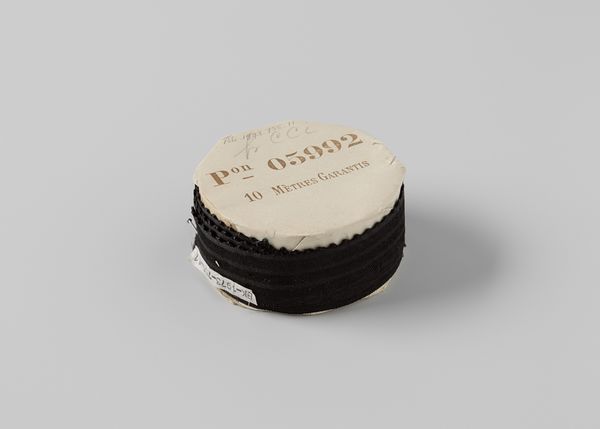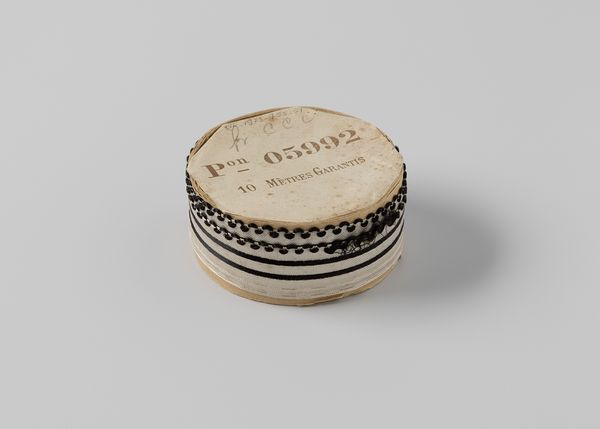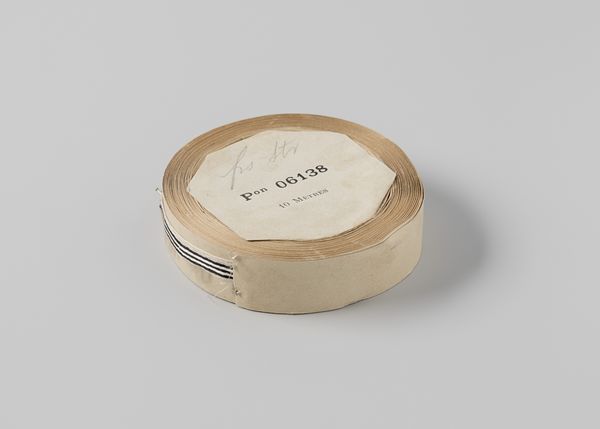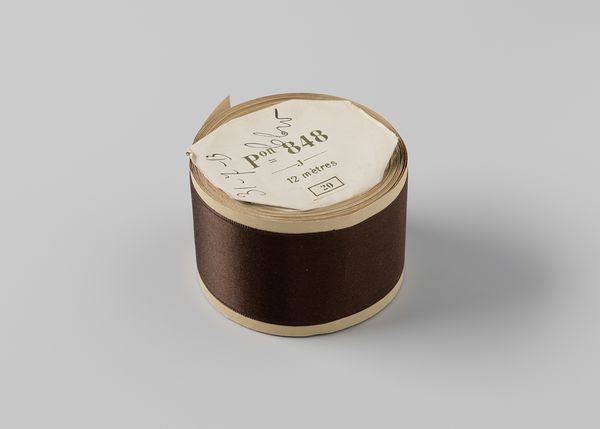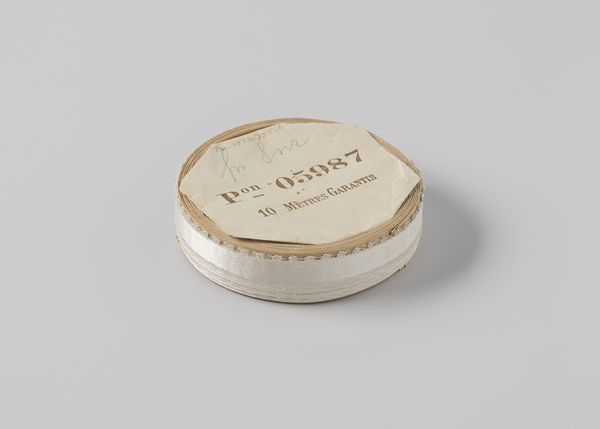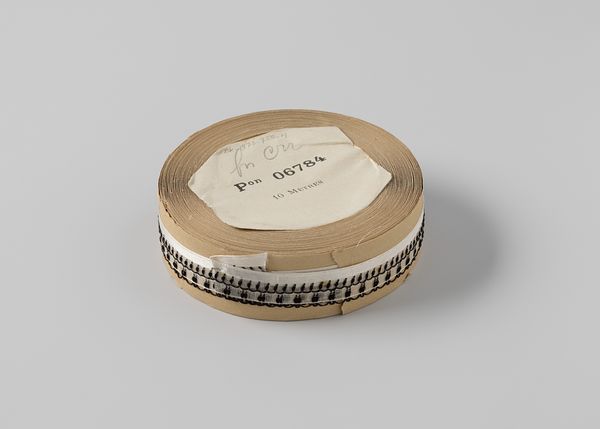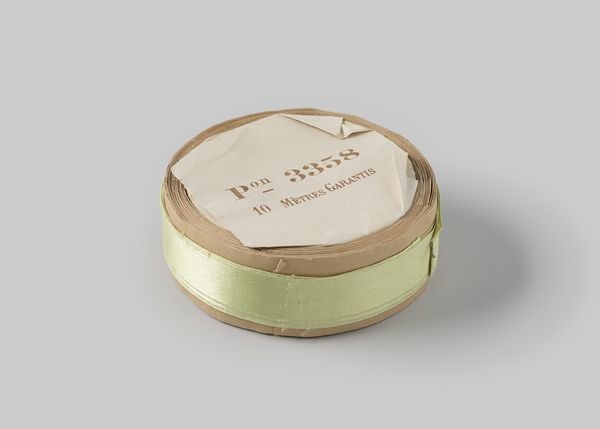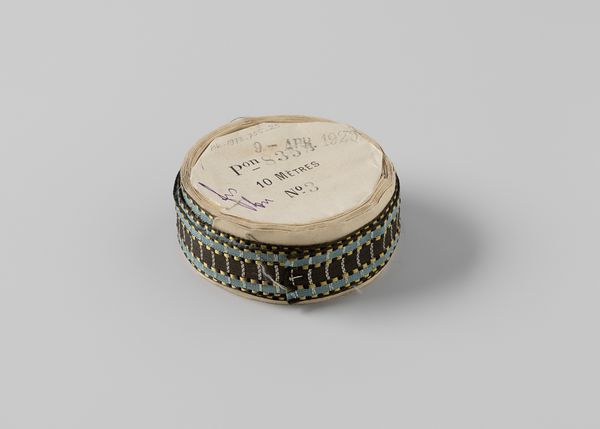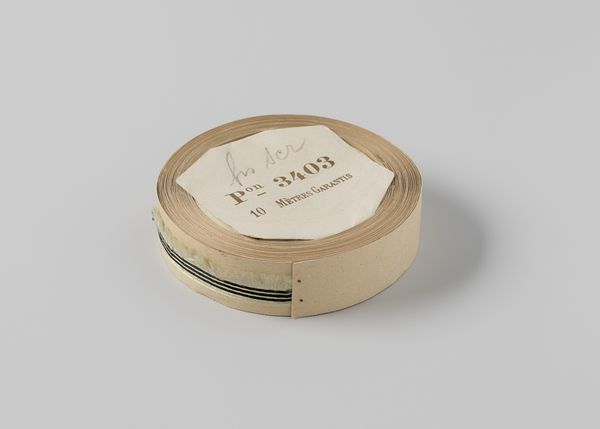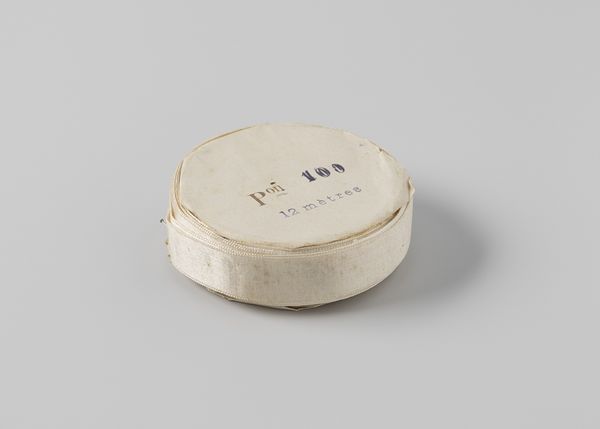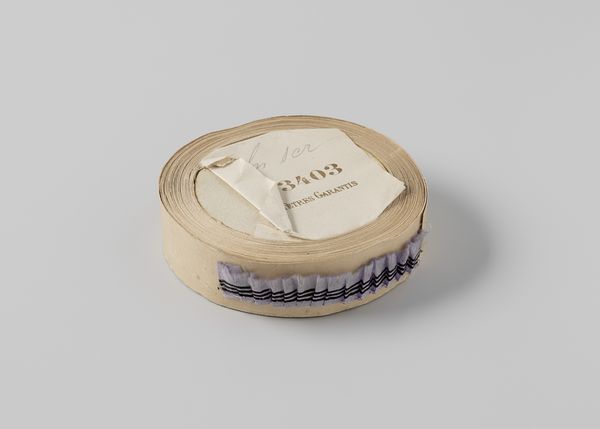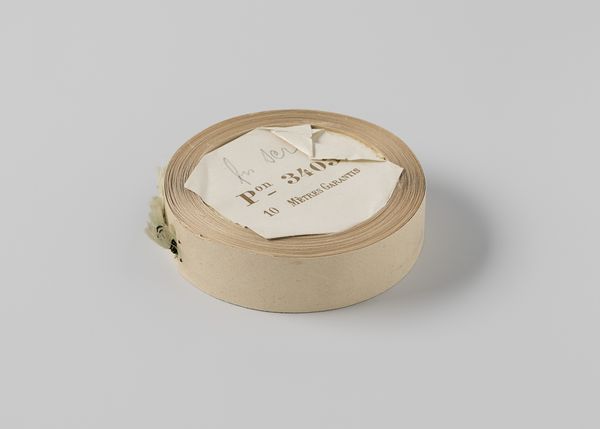
Lint op rol, zwart satijn met één zijde voorzien van picots c. 1890 - 1935
0:00
0:00
photography
#
studio photography
#
product photograph merchandise
#
product studio photography
#
product shot
#
staged studio photograpy
#
still-life-photography
#
lifestyle product photography
#
photography
#
product design photgrpaphy
#
graphic design product photography
#
product photography
#
retail photography
#
realism
Dimensions: width 1.3 cm, diameter 8 cm, height 3.1 cm
Copyright: Rijks Museum: Open Domain
Curator: Here we have an image entitled "Lint op rol, zwart satijn met één zijde voorzien van picots," or "Ribbon on a roll, black satin with one side provided with picots" from circa 1890 to 1935, held here at the Rijksmuseum. It's a photograph, specifically. What catches your eye about it? Editor: Well, immediately, I am drawn to the stark simplicity. It's a single object, isolated. It’s simultaneously mundane and somehow evocative, a silent commentary on consumption, labor, and hidden histories embedded in something so seemingly basic. Curator: Indeed. Studio photography like this had a vital function in advertising. The image shifts away from romantic portraiture to highlighting everyday items that would eventually become essential consumer commodities. Notice how this elevates a utilitarian object into something aesthetically worthy of attention. Editor: Right, but isn’t the very act of isolating it on a neutral backdrop loaded? It points to a specific gaze—one that idealizes the domestic sphere, potentially erasing the labor behind its production and the complexities of its usage. It asks us to buy into a specific narrative about beauty and usefulness. Curator: To some extent, but looking back at the turn of the century and beyond, these objects became emblematic of broader societal shifts. The ribbon itself reflects evolving notions of fashion, industrialization, and burgeoning consumer culture accessible to widening demographics, enabled through technologies like photography. Editor: Agreed. It definitely speaks to how industrial production created entirely new categories of materials and goods that shaped daily life. It also emphasizes class distinctions: certain types of fabric or trimmings indicated status or were only accessible to certain classes. Who was buying this ribbon, and what kind of societal performances did it enable? Curator: Precisely. How were these objects displayed, advertised, and sold, what other visual narratives accompanied its marketing? It reminds us that material culture shapes broader societal structures. This simple ribbon's image opens avenues to deeper reflections on consumerism, gender, and labor conditions. Editor: And photographs like this become historical markers, don’t they? Traces of those bygone economies, hinting at untold stories behind the object itself and the hands involved in making, distributing, buying, and, eventually, wearing it. It leaves a somber mood, reflecting our consumerist realities. Curator: Ultimately, this deceptively straightforward photo offers much to consider about the socio-economic landscape of its time, a tangible reflection of industrial progress and our ongoing consumption patterns. Editor: Absolutely, forcing us to contemplate what remains concealed behind an apparently simple photograph and its wider connection to culture.
Comments
No comments
Be the first to comment and join the conversation on the ultimate creative platform.
